Tailings Filtration Using Recessed Plate Filter Presses: Improving Filter Media Selection by Replicating the Abrasive Wear of Filter Media Caused by Falling Filter Cake after Cake Detachment
Abstract
:1. Introduction
- Filling the filter, high flow velocities occur in the area around the chamber inlets. Over the years, patches have been sewn into these zones by suppliers to provide additional strength and counteract wear.
- Increased velocities also occur near the filtrate outlets of the plates at the beginning of filtration before the first cake layer is formed. Particles passing the fabric cause abrasion on the filter medium.
- Falling filter cake after detachment brushes the filter media at the lower edge of the chamber frame and protruding parts of the chamber.
- Remaining parts of the filter cake on the sealing surfaces get trapped between two opposing filter plates and filter media for the duration of the next filter cycle. Such repetitive pressing of solid particles causes stress to the fabrics and to the plates.
2. Materials and Methods
3. Results
3.1. Filter Media Material Characterization
3.2. Brush Apparatus Parameter
3.3. Tailings Filtration Filter Media
4. Discussion
5. Conclusions
Author Contributions
Funding
Institutional Review Board Statement
Informed Consent Statement
Data Availability Statement
Acknowledgments
Conflicts of Interest
References
- Global Industry Standard on Tailings Management. Available online: https://www.icmm.com/website/publications/pdfs/environmental-stewardship/2020/global-industry-standard-on-tailings-management.pdf (accessed on 5 January 2022).
- Global Tailings Portal. Available online: https://tailing.grida.no/#header (accessed on 5 January 2022).
- State of World Mine Tailings Portfolio. Available online: https://worldminetailingsfailures.org/ (accessed on 11 January 2022).
- Tailings Pond Collapse Affects World’s Highest Human Settlement. Available online: https://www.mining.com/tailings-pond-collapse-affects-worlds-highest-human-settlement/ (accessed on 11 January 2022).
- Davies, M.P. Filtered Dry Stacked Tailings—The Fundamentals. In Proceedings of the Tailings and Mine Waste, Vancouver, BC, Canada, 6–9 November 2011. [Google Scholar]
- Gomes, R.B.; De Tomib, G.; Assisa, P.S. Iron ore tailings dry stacking in Pau Branco mine, Brazil. J. Mater. Res. Technol. 2016, 5, 339–344. [Google Scholar] [CrossRef] [Green Version]
- Kruyswijk, J.B. The balance between energy and water preservation in the deposition of dry tailings in wet climates. In Proceedings of the Paste, Perth, Australia, 21–23 September 2021. [Google Scholar] [CrossRef]
- Concha, F. Challenges in solid-liquid separation—Thickening Theory and Applications. In Proceedings of the International Mineral Processing Congress, Santiago, Chile, 20–24 October 2014. [Google Scholar]
- Wisdom, T.; Neumann, R.; Chaponnel, J. Development and Testing of the World’s Largest Capacity Tailings Filter Press. In Proceedings of the Paste Santiago, Santiago, Chile, 2–6 November 2020. [Google Scholar] [CrossRef]
- Wisdom, T. Maintaining high availability and low operational costs for filtered tailings facilities. In Proceedings of the Paste, Cape Town, South Africa, 8–10 May 2019. [Google Scholar] [CrossRef] [Green Version]
- Furnell, E.; Bilaniuk, K.; Goldbaum, M.; Shoaib, M.; Wani, O.; Tian, X.; Chen, Z.; Boucher, D.; Bobicki, E.R. Dewatered and Stacked Mine Tailings: A Review. ACS EST Eng. 2022, 2, 728–745. [Google Scholar] [CrossRef]
- Wakeman, R. Filter media: Testing for liquid filtration. Filtr. Sep. 2007, 44, 32–34. [Google Scholar] [CrossRef]
- Micronics’ HPR Feed Neck Design Improves Filter Press Cloth Performance. Available online: https://www.micronicsinc.com/filtration-news/hpr-feed-neck-design/ (accessed on 10 January 2022).
- Micronics’ New Mine-XLLTM Filter Cloth Delivers over 10,000 Cycles in Select Minerals Processing Applications. Available online: https://www.micronicsinc.com/filtration-news/new-mine-xll-mining-filter-cloth/ (accessed on 10 January 2022).
- Weigert, T.; Ripperger, S. Effect of filter fabric blinding on cake filtration. Filtr. Sep. 1997, 34, 507–510. [Google Scholar] [CrossRef]
- Fränkle, B.; Morsch, P.; Nirschl, H. Regeneration Assessments of Filter Fabrics of Filter Presses in the Mining Sector. Miner. Eng. 2021, 168, 106922. [Google Scholar] [CrossRef]
- Fränkle, B.; Morsch, P.; Kessler, C.; Sok, T.; Gleiß, M.; Nirschl, H. Iron Ore Tailings Dewatering: Measurement of Adhesion and Cohesion for Filter Press Operation. Sustainability 2022, 14, 3424. [Google Scholar] [CrossRef]
- Top, S.; Vapur, H.; Ekicibil, A. Characterization of zeolites synthesized from porous wastes using hydrothermal agitational leaching assisted by magnetic separation. J. Mol. Struct. 2018, 1163, 4–9. [Google Scholar] [CrossRef]
- Bao, T.; Chen, T.; Wille, M.; Ahmadi, N.E.; Rathnayake, S.I.; Chen, D.; Frost, R. Synthesis, application and evaluation of non-sintered zeolite porous filter (ZPF) as novel filter media in biological aerated filters (BAFs). J. Environ. Chem. Eng. 2016, 4, 3374–3384. [Google Scholar] [CrossRef]
- Lahnafi, A.; Elgamouz, A.; Tijani, N.; Jaber, L.; Kawde, A. Hydrothermal synthesis and electrochemical characterization of novel zeolite membranes supported on flat porous clay-based microfiltration system and its application of heavy metals removal of synthetic wastewaters. Microporous Mesoporous Mater. 2022, 334, 111778. [Google Scholar] [CrossRef]
- Sun, K.C.; Noh, J.W.; Choi, Y.O.; Jeong, S.H.; Kim, Y.S. Zeolite and short-cut fiber-based wet-laid filter media for particles and heavy metal ion removal of wastewater. J. Ind. Text. 2021, 50, 1475–1492. [Google Scholar] [CrossRef]
- Şükrü, U.; Musa, S.; Soner, T.; İrfan, T. Removal of heavy metals from wastewater solution using a mechanically activated novel zeolitic material. J. Min. Sci. 2020, 56, 1010–1023. [Google Scholar] [CrossRef]
- Hwang, T.; Neculita, C.M. In Situ Immobilization of Heavy Metals in Severely Weathered Tailings Amended with Food Waste-Based Compost and Zeolite. Water Air Soil Pollut. 2013, 224, 1388. [Google Scholar] [CrossRef]
- Rey, V.; Ríos, C.A.; Vargas, L.Y.; Valente, T.M. Use of natural zeolite-rich tuff and siliceous sand for mine water treatment from abandoned gold mine tailings. J. Geochem. Explor. 2021, 220, 106660. [Google Scholar] [CrossRef]
- Shen, X.; Qiu, G.; Yue, C.; Guo, M.; Zhang, M. Multiple copper adsorption and regeneration by zeolite 4A synthesized from bauxite tailings. Environ. Sci. Pollut. Res. 2017, 24, 21829–21835. [Google Scholar] [CrossRef]
- Izidoro, J.D.C.; Kim, M.C.; Bellelli, V.F.; Pane, M.C.; Botelho Junior, A.B.; Espinosa, D.C.R.; Tenório, J.A.S. Synthesis of zeolite A using the waste of iron mine tailings dam and its application for industrial effluent treatment. J. Sustain. Min. 2019, 18, 277–286. [Google Scholar] [CrossRef]
- ISO 9352:2012; Plastics—Determination of Resistance to Wear by Abrasive Wheels. International Organization for Standardization: Geneva, Switzerland, 2012.
- ASTM D1044-19; Standard Test Method for Resistance of Transparent Plastics to Surface Abrasion by the Taber Abraser. ASTM International: Philadelphia, PA, USA, 2019.
- ISO 3537:2015; Road Vehicles—Safety Glazing Materials—Mechanical Tests. International Organization for Standardization: Geneva, Switzerland, 2015.
- ISO 15082:2016; Road Vehicles—Tests for Rigid Plastic Safety Glazing Materials. International Organization for Standardization: Geneva, Switzerland, 2016.
- Taber Abraser Test. Available online: https://www.ist.fraunhofer.de/de/leistungsangebot/analytik_und_qualitaetssicherung/reibungs-_und_verschleissmessung/taber_abraser_test.html (accessed on 10 January 2022).
- Sommer, K.; Heinz, R.; Schöfer, J. Verschleiß Metallischer Werkstoffe; Springer Vieweg: Wiesbaden, Germany, 2018. [Google Scholar]
- ASTM G99-17; Standard Test Method for Wear Testing with a Pin-on-Disk Apparatus. ASTM International: Philadelphia, PA, USA, 2017.
- Chairman, C.A.; Ravichandran, M.; Mohanavel, V.; Sathish, T.; Rashedi, A.; Alarifi, I.M.; Badruddin, I.A.; Anqi, A.E.; Afzal, A. Mechanical and Abrasive Wear Performance of Titanium Di-Oxide Filled Woven Glass Fibre Reinforced Polymer Composites by Using Taguchi and EDAS Approach. Materials 2021, 14, 5257. [Google Scholar] [CrossRef]
- Akhtar, M.N.; Sathish, T.; Mohanavel, V.; Afzal, A.; Arul, K.; Ravichandran, M.; Rahim, I.A.; Alhady, S.S.N.; Bakar, E.A.; Saleh, B. Optimization of Process Parameters in CNC Turning of Aluminum 7075 Alloy Using L27 Array-Based Taguchi Method. Materials 2021, 14, 4470. [Google Scholar] [CrossRef]
- Sharath, B.N.; Venkatesh, C.V.; Afzal, A.; Aslfattahi, N.; Aabid, A.; Baig, M.; Saleh, B. Multi Ceramic Particles Inclusion in the Aluminium Matrix and Wear Characterization through Experimental and Response Surface-Artificial Neural Networks. Materials 2021, 14, 2895. [Google Scholar] [CrossRef]
- Lin, J.H.; Lou, C.W.; Lei, C.H.; Lin, C.Y. Processing conditions of abrasion and heat resistance for hybrid needle-punched nonwoven bag filters. Compos. Part A Appl. Sci. Manuf. 2006, 37, 31–37. [Google Scholar] [CrossRef]
- ASTM D4886-18; Standard Test Method for Abrasion Resistance of Geotextiles (Sandpaper/Sliding Block Method). ASTM International: Philadelphia, PA, USA, 2018.
- VDI 2762 Part 3; Mechanical Solid-Liquid-Separation by Cake Filtration—Mechanical Deliquoring of Incompressible Filter Cakes by Undersaturation Using a Gas Pressure Difference. Verlag des Vereins Deutscher Ingenieure: Düsseldorf, Germany, 2017.
- Castelan-Velazco, L.I.; Mendez-Nonell, J.; Sanchez, S.; Ramos, L. Morphology and Osteogenetic Characteristics of Polyamide/NanoHydroxyapatite Biocomposites. Polym. Bull. 2009, 62, 99–110. [Google Scholar] [CrossRef]
- Borić, A.; Kalendová, A.; Urbanek, M.; Pepelnjak, T. Characterisation of Polyamide (PA)12 Nanocomposites with Montmorillonite (MMT) Filler Clay Used for the Incremental Forming of Sheets. Polymers 2019, 11, 1248. [Google Scholar] [CrossRef] [PubMed]
- Lima, R.; Pereira, T.; Silva Filho, E.A. Polyamide 11 porous films by NIPS: The influence of miscibility and polymer crystalline formation in pores structure and morphology. Quim. Nova 2021, 44, 675–682. [Google Scholar] [CrossRef]
- Shanak, H.; Ehses, K.H.; Götz, W.; Leibenguth, P.; Pelsteret, R. X-ray diffraction investigations of α-polyamide 6 films: Orientation and structural changes upon uni- and biaxial drawing. J. Mater. Sci. 2009, 44, 655–663. [Google Scholar] [CrossRef]
- Chrissopoulou, K.; Anastasiadis, S.H. Polyolefin/layered silicate nanocomposites with functional compatibilizers. Eur. Polym. J. 2011, 47, 600–613. [Google Scholar] [CrossRef] [Green Version]
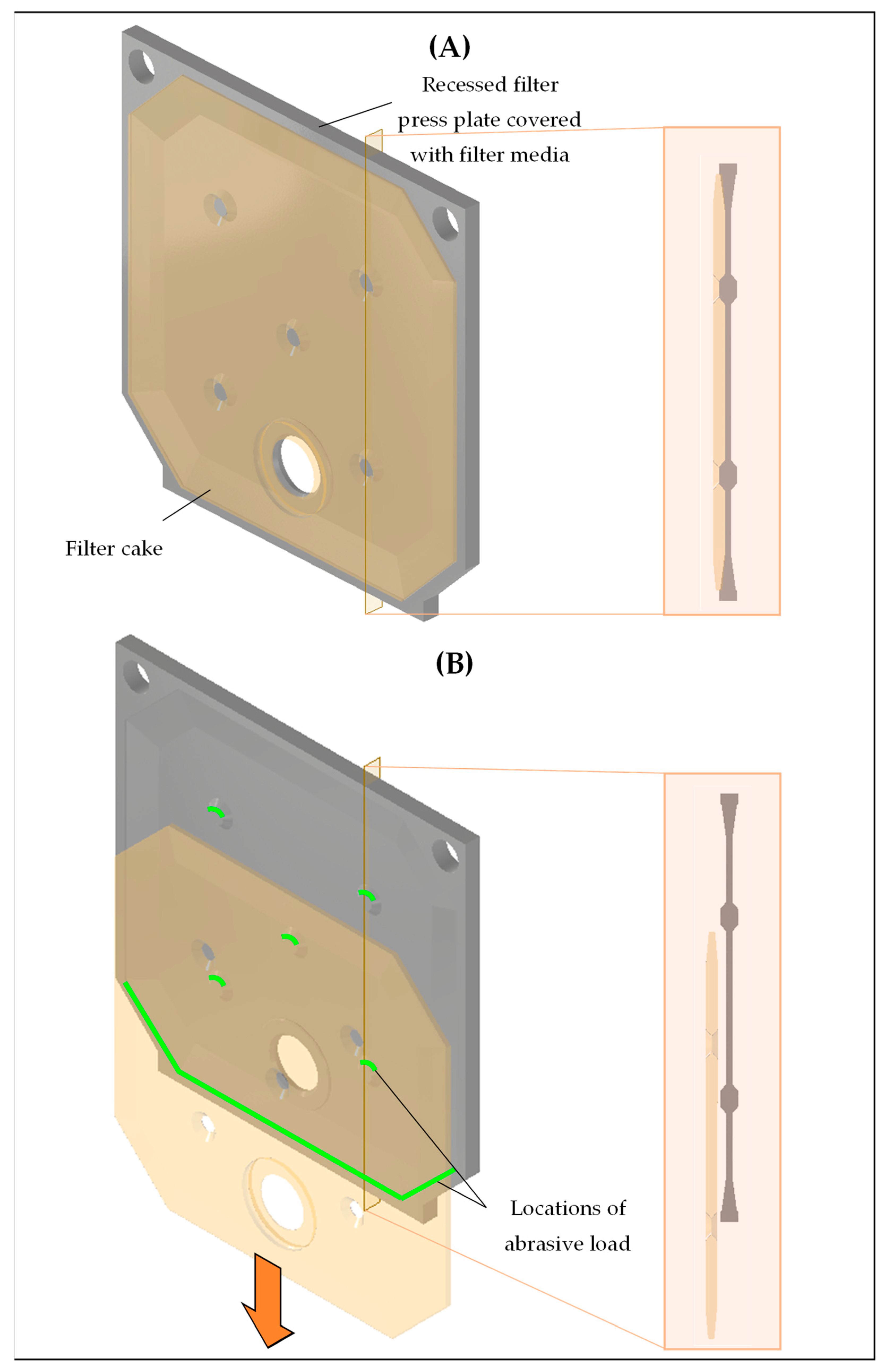
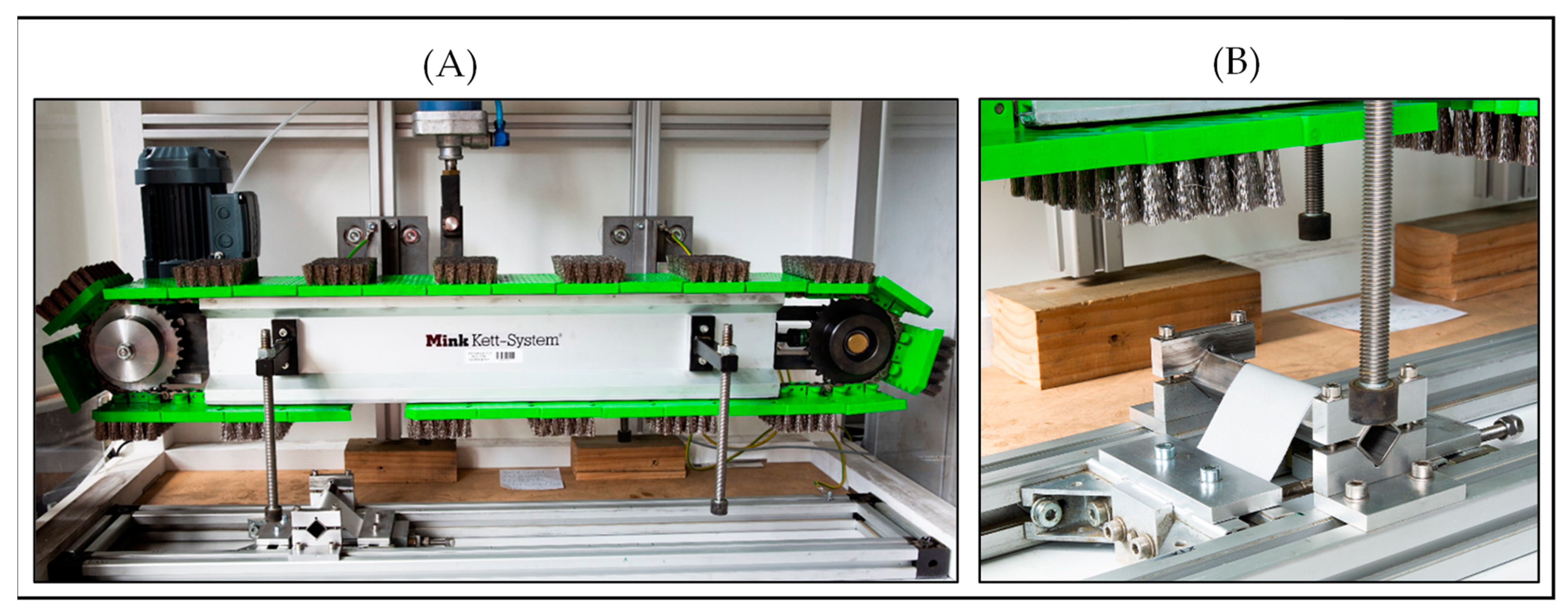
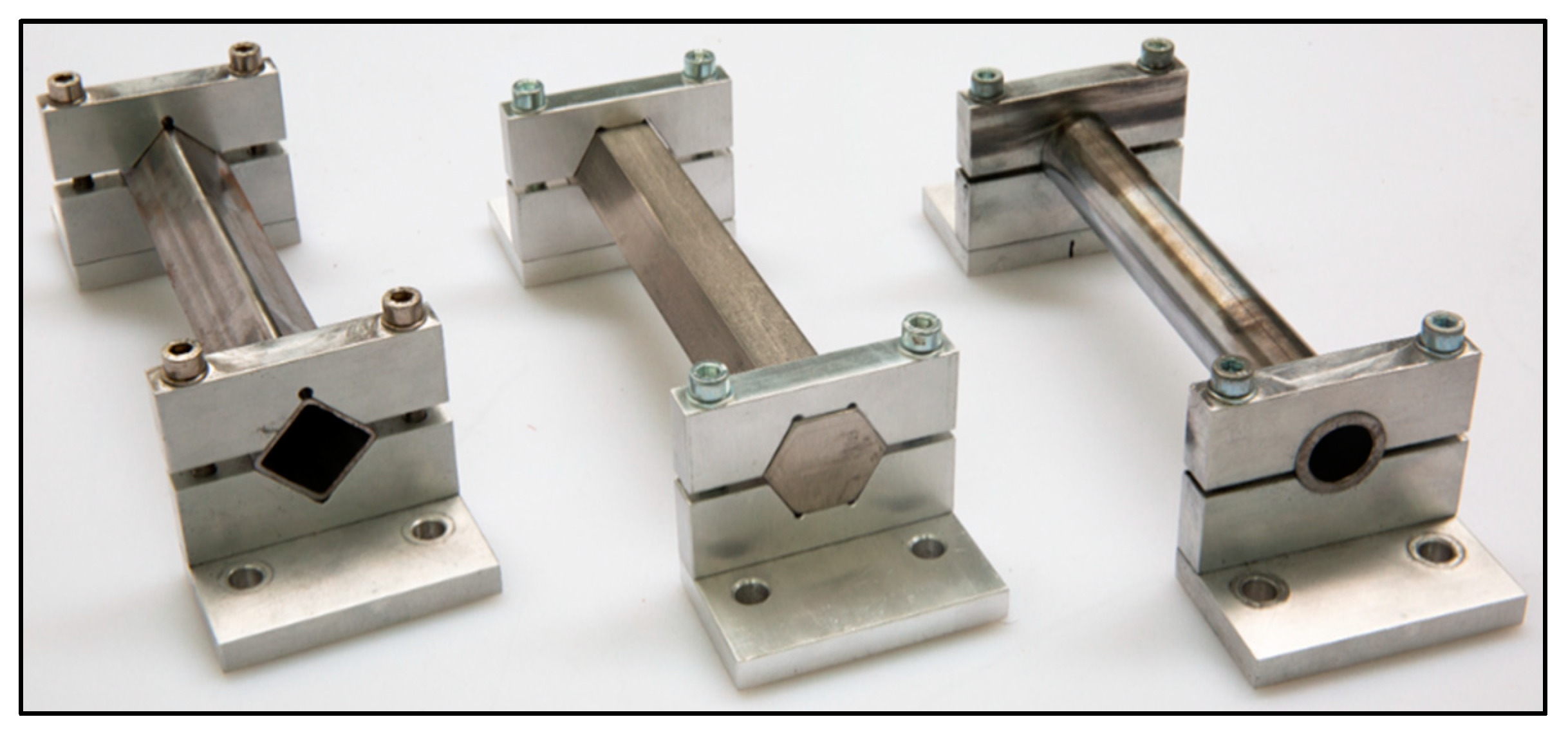


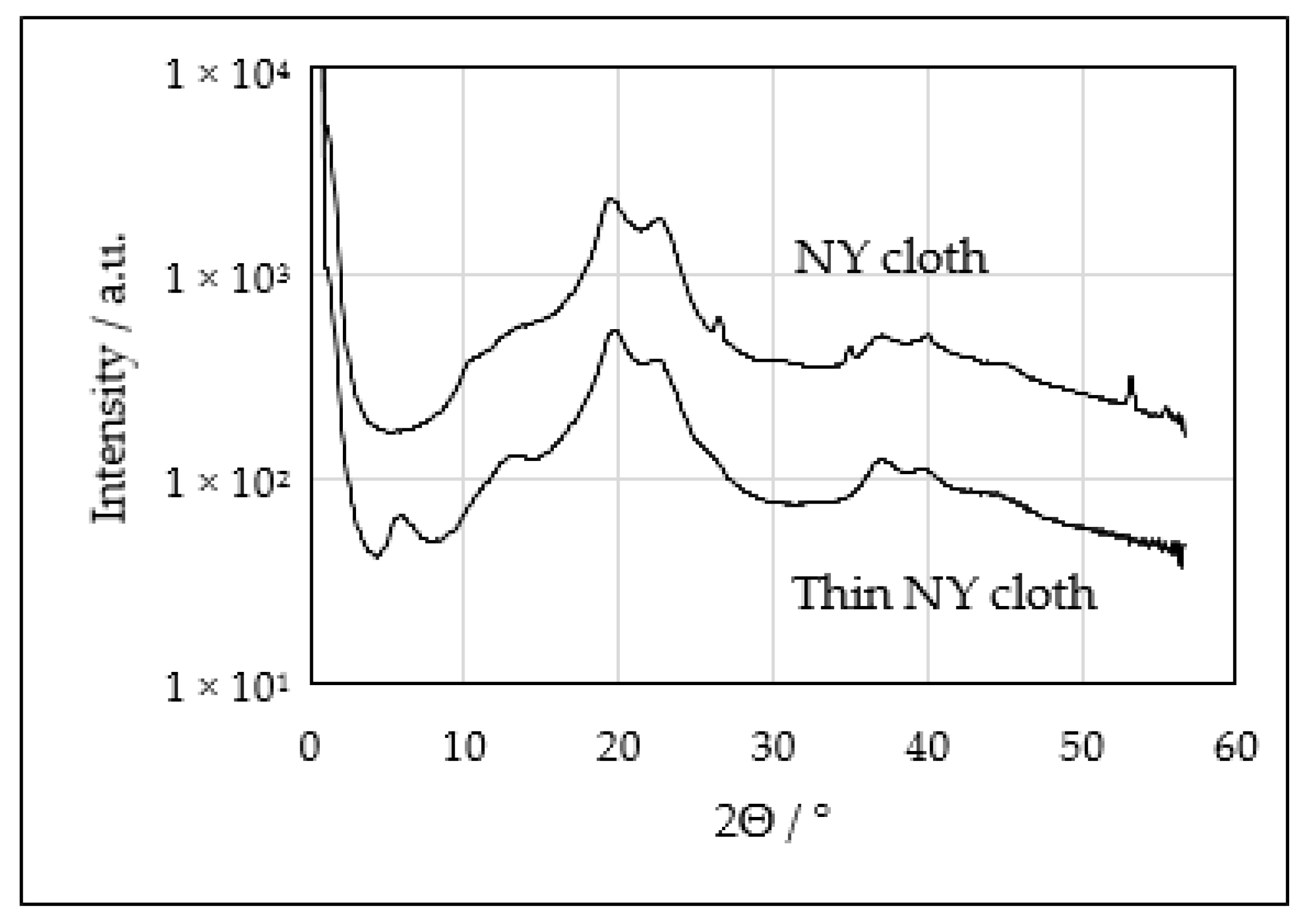

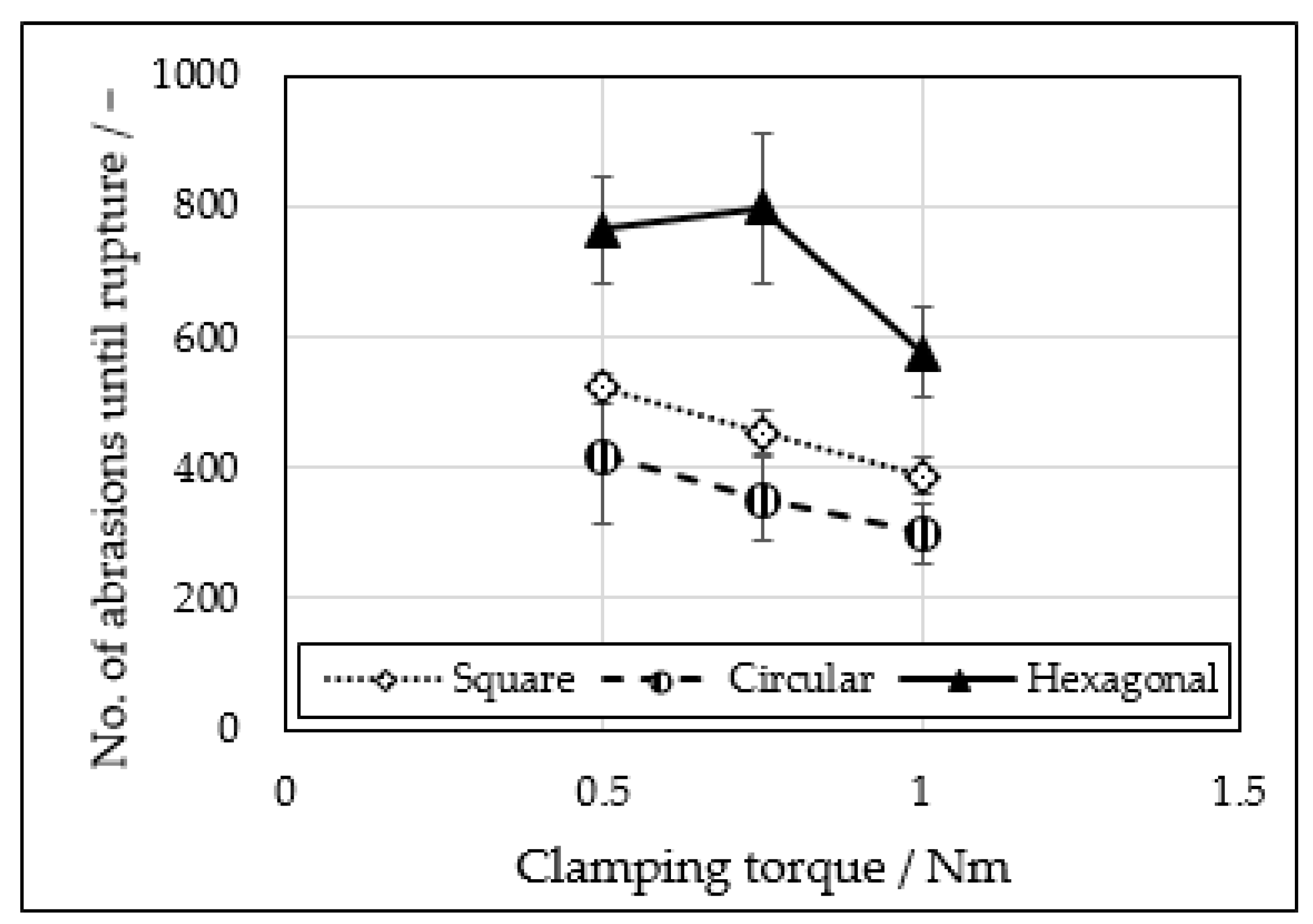

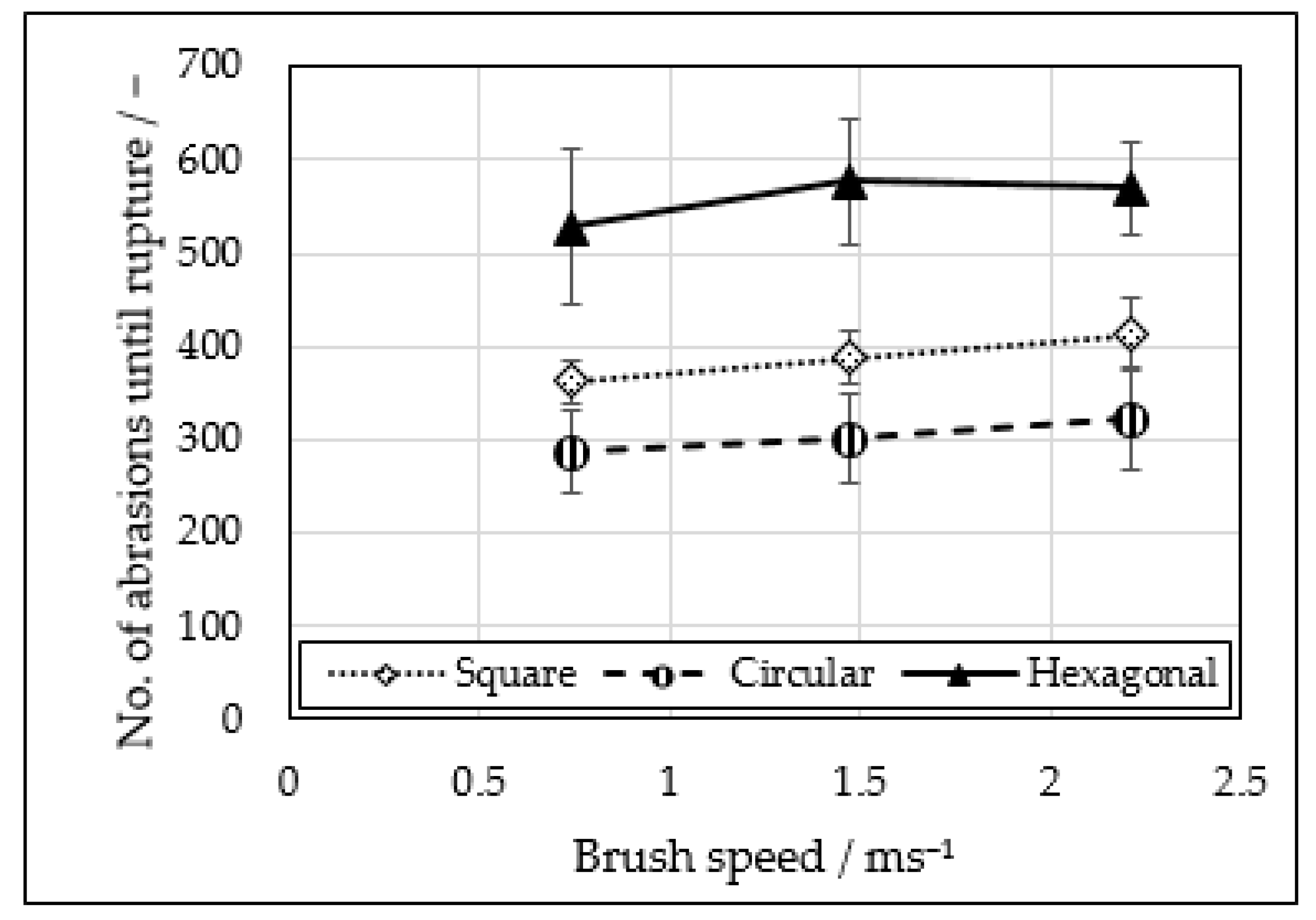

| Thin NY-Cloth | |
|---|---|
| LSM image |  |
| Weave-type | Plain |
| Fiber type | Mono/mono |
| Fiber diameter (warp/weft) | 85 ± 4/95 ± 16 µm |
| Flow resistance | 1.1 ± 0.1 × 108 m−1 |
| Thickness | 0.16 ± 0.01 mm |
| PP-Cloth | NY-Cloth | PP-Felt | |
|---|---|---|---|
| LSM image | 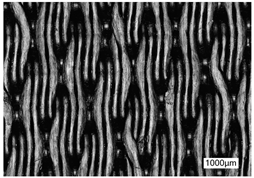 | 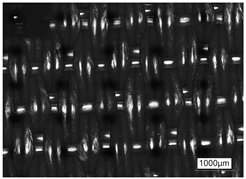 | 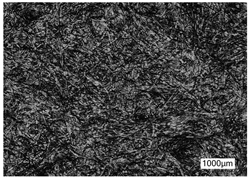 |
| Weave-type | Twill | Plain | - |
| Fiber type | Mono/mono | Mono/mono | - |
| Fiber diameter (warp/weft) | 180 ± 10/330 ± 30 µm | 280 ± 20/310 ± 20 µm | - |
| Flow resistance | 2.6 ± 0.6 × 108 m−1 | 1.8 ± 0.1 × 108 m−1 | 7.4 ± 0.9 × 108 m−1 |
| Thickness | 1.1 ± 0.1 mm | 1.0 ± 0.1 mm | 2.2 ± 0.2 mm |
| Square | Circular | Hexagonal | |
|---|---|---|---|
| NY-cloth to PP-cloth | 3.6 | 5.3 | 4.9 |
| NY-cloth to PP-felt | 31.8 | 25.0 | 16.1 |
| PP-cloth to PP-felt | 8.9 | 4.7 | 3.3 |
Publisher’s Note: MDPI stays neutral with regard to jurisdictional claims in published maps and institutional affiliations. |
© 2022 by the authors. Licensee MDPI, Basel, Switzerland. This article is an open access article distributed under the terms and conditions of the Creative Commons Attribution (CC BY) license (https://creativecommons.org/licenses/by/4.0/).
Share and Cite
Fränkle, B.; Morsch, P.; Sok, T.; Gleiß, M.; Nirschl, H. Tailings Filtration Using Recessed Plate Filter Presses: Improving Filter Media Selection by Replicating the Abrasive Wear of Filter Media Caused by Falling Filter Cake after Cake Detachment. Mining 2022, 2, 425-437. https://doi.org/10.3390/mining2020022
Fränkle B, Morsch P, Sok T, Gleiß M, Nirschl H. Tailings Filtration Using Recessed Plate Filter Presses: Improving Filter Media Selection by Replicating the Abrasive Wear of Filter Media Caused by Falling Filter Cake after Cake Detachment. Mining. 2022; 2(2):425-437. https://doi.org/10.3390/mining2020022
Chicago/Turabian StyleFränkle, Bernd, Patrick Morsch, Thien Sok, Marco Gleiß, and Hermann Nirschl. 2022. "Tailings Filtration Using Recessed Plate Filter Presses: Improving Filter Media Selection by Replicating the Abrasive Wear of Filter Media Caused by Falling Filter Cake after Cake Detachment" Mining 2, no. 2: 425-437. https://doi.org/10.3390/mining2020022
APA StyleFränkle, B., Morsch, P., Sok, T., Gleiß, M., & Nirschl, H. (2022). Tailings Filtration Using Recessed Plate Filter Presses: Improving Filter Media Selection by Replicating the Abrasive Wear of Filter Media Caused by Falling Filter Cake after Cake Detachment. Mining, 2(2), 425-437. https://doi.org/10.3390/mining2020022







